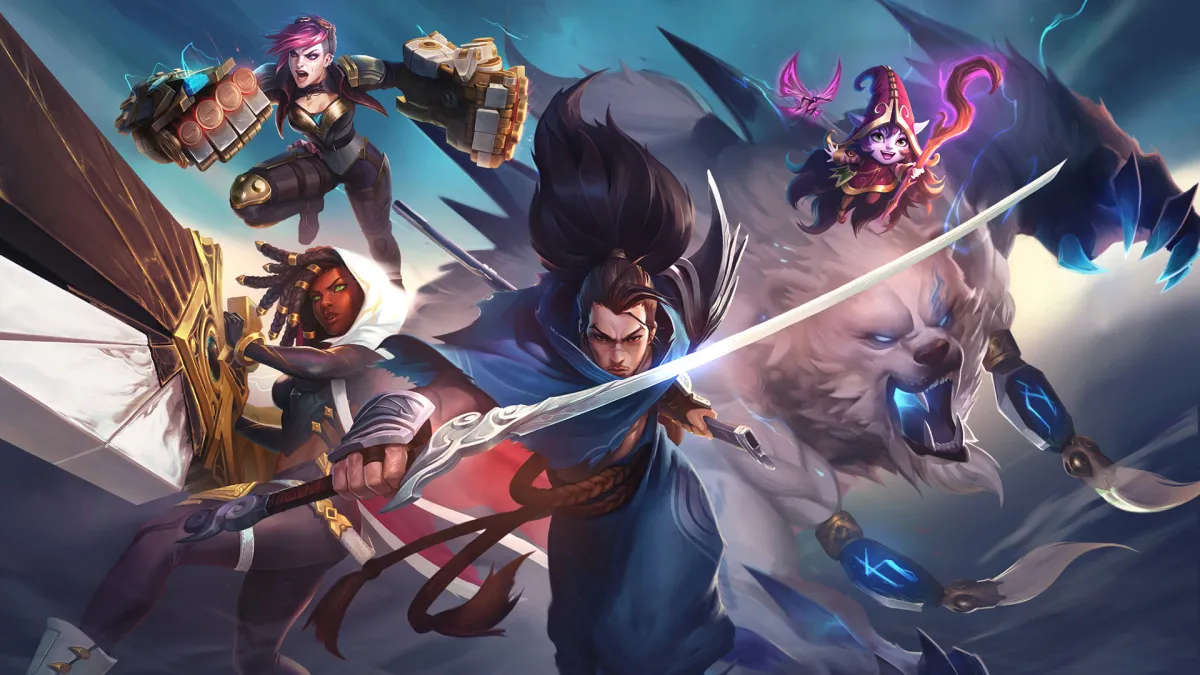
Now that we have covered the aspects of picks and bans, we’re going to look at how the champions themselves play into those interactions when building a roster of abilities and passives. That’s right, we’re going over drafting compositions, how they stack against each other, and champion pools. These will all be handled as broad concepts, so if you want to learn the in-depth mechanics of each individual composition and the champions that fit them, just stay tuned for the future…
Computers On Tap (AKA Drafting Comps)
I’m sure you all have heard the casters mention the phrase “team comp” in regards to how a specific organization of champions is suppose to be utilized, but you may have never really looked into the actual possibilities. Compositions have a huge range; from general teamfighting comps to “Jugger-Maw” comps, there are boundless ways to build and execute particular teams to carry out your bidding. As mentioned earlier, we’ll cover a lot of these over the future articles, but in the meantime let’s look at a draft phase by SKT at the 2015 Worlds Finals to see what they drafted, why, and their win conditions;

This was the first game in the four game series between SKT and KOO to decide who was the 2015 World Champion. SKT first pick Rek’sai, which at first only looks like a comfort/OP pick for Bengi, but ends up playing into their composition really well. Next, we see KOO take Lulu and Alistar, immediately giving away that they want to engage and they want to fight. We know this because the combined kits of Alistar and Lulu are abilities that are designed to CC, peel, and close gaps; all things you want to do in/leading up to team fights. SKT see this and immediately pick Shen and Sivir. The Sivir deny makes complete sense in this situation (removing her ultimate from the KOO roster), but the Shen seems a little out of place, for now. Next, Lee Sin and Jinx are taken for KOO and that pretty much seals the deal for them; they want to fight and do it with a “protect the carry” comp, using Lulu/Alistar for peel, Lee Sin to engage, and Jinx for damage. SKT responds by picking Kassadin and Rumble; one designed for picking off carries and the other designed for zoning. We also know that Shen is now support, Rumble is probably taking Teleport, and Rek’sai is jungle, with an incredibly mobile mid laner, and speed-boost ADC, so SKT is looking for global pressure, while still maintaining a presence in team fights; this way they’re able to effectively 1-3-1 split push against KOO’s all-in teamfight comp. By the time KOO picks Riven it’s a bit too late, because SKT did their research and knew what to look for during draft and how to counter it.
Win conditions for comps can change as the draft or game happens; they are not rules set in stone, they are malleable priorities that lead to success. For instance, Kassadin is a champion that needs to snowball in order to be relevant and carry a game, yet Faker only gets his third and last kill of the game at ~24:15, meaning SKT needed to play the split push game more carefully. If Faker could have gotten 10 kills by this point, then using Sivir ult to engage, while the Kassadin flanked and picked off anyone he wanted, could have been their win condition, instead of patiently forcing KOO to use cooldowns, waiting until their own cooldowns were up, then effectively using their global split push.
- A few general aspects to keep in mind when you’re building a team comp are;
- Do we have enough damage?
- Is it appropriately dispersed between AP and AD?
- Do we have wave clear if we need it?
- Are we potentially picking poor lane matchups?
Once you have addressed those basic principles, you can continue to more specific issues, such as where your power lies and how to capitalize on it.
MY COMPUTER COULD BEAT YOUR COMPUTERS ASS
Just how every action has an equal and opposite reaction, each composition has an equal and opposite, um, re-composition? There’s a counter for everything, okay?! As we saw in the last section, SKT used their understanding of the opponent, paired with their reactionary draft of the champions chosen, to create a counter against what KOO wanted to do; this can carry over into any draft phase. The problem with identifying which comps to build and what comps are better comes down to the absurd amount of factors that are at play. For example, pick compositions that are designed to catch a player out of position can be a hard counter to poke comps that revolve around tossing out damage from a distance, because pick comps usually come with extreme amounts of mobility, something poke comps usually lack. However, with the introduction of champions like Tahm Kench and Kindred, it is vastly more difficult to simply kill someone, nevermind the list of older champions that also make life hell for these comps; such as Lulu, Kayle, Zilean, Morgana, Sivir, and Janna. This is why knowing every champion’s kit and how it can be utilized is essential to building your own composition. If you want to build a Sivir comp, that runs down the enemy team and murders them, then leaving up mid lane champions like Veigar, Azir, and Anivia is a huge mistake. Sometimes it only takes a single champion to shut down your entire strategy, so preparation is key.
How Many Pools Of Dudes Can Fit in A Computer?
Sometimes you’re living a parallel existence, where you are Kendrick Lamar singing “I got a pool full of champions and I diiiiiive in” and sometimes you’re Rick Ross taking pop-shots at someone that bodied your homie in this year’s biggest and shortest rap beef. A player’s champion pool is something that needs constant consideration throughout draft phase. If your top laner can’t seem to wrap his mind around the effective use of Hecarim’s ult, then you might not want to force him on that champion and expect him to make the most insane Teleport plays. These limitations are where teams usually get their styles. For instance, CLG was notorious for split push compositions this past season. During the NA LCS, Doublelift and Darshan’s champion pools were aspects that CLG could rely on no matter what:

Above are some of their most played champions and their win/loss ratios. Even when you look at the losses of each champion, it’s usually because CLG veered from their successful 1-3-1 style; i.e. the two losses on Jinx being “protect the ADC” comps instead. This is where I think Zikz and BlurredLimes (now RiftCoach) were incredibly successful in applying their team’s overall strengths. They knew their players’ styles, champion pools, and in-game motivations, so they were able to create a draft phase and strategy around that, in order to climb the NA LCS Ladder (which I’m sure we’re all surprised didn’t break), and take first place.
This Has Been An Article About Computers & Pools
The lack of clear cut guidelines may seem like a hurdle to some, but that is exactly why I love draft phase. The whole thing is one vast mind game to see who can more uniquely outplay the opponent in this quick game of poker. With 128 champions to choose from and five players to maneuver around, picks and bans can be the ultimate test for a team. Especially when you’re tasked with the rare complication of not having a team composed of five Fakers. From here, we’ll be breaking down the major compositions used in competitive play, seeing how and why to draft them, and looking at recent examples of those comps in action. Until then, make sure to go over everything we’ve covered up until now in preparation. See you guys on the social medias and my cats say “goodbye”.
-Robert Bennett AKA The Lightbox
http://www.twitch.tv/thelightbox
https://twitter.com/TheLightboxEnt
http://thelightboxent.tumblr.com/
https://instagram.com/thelightboxent/
https://www.facebook.com/TheLightboxEntertainment
https://www.youtube.com/user/TheLightboxEnt






Published: Jan 4, 2016 01:52 pm